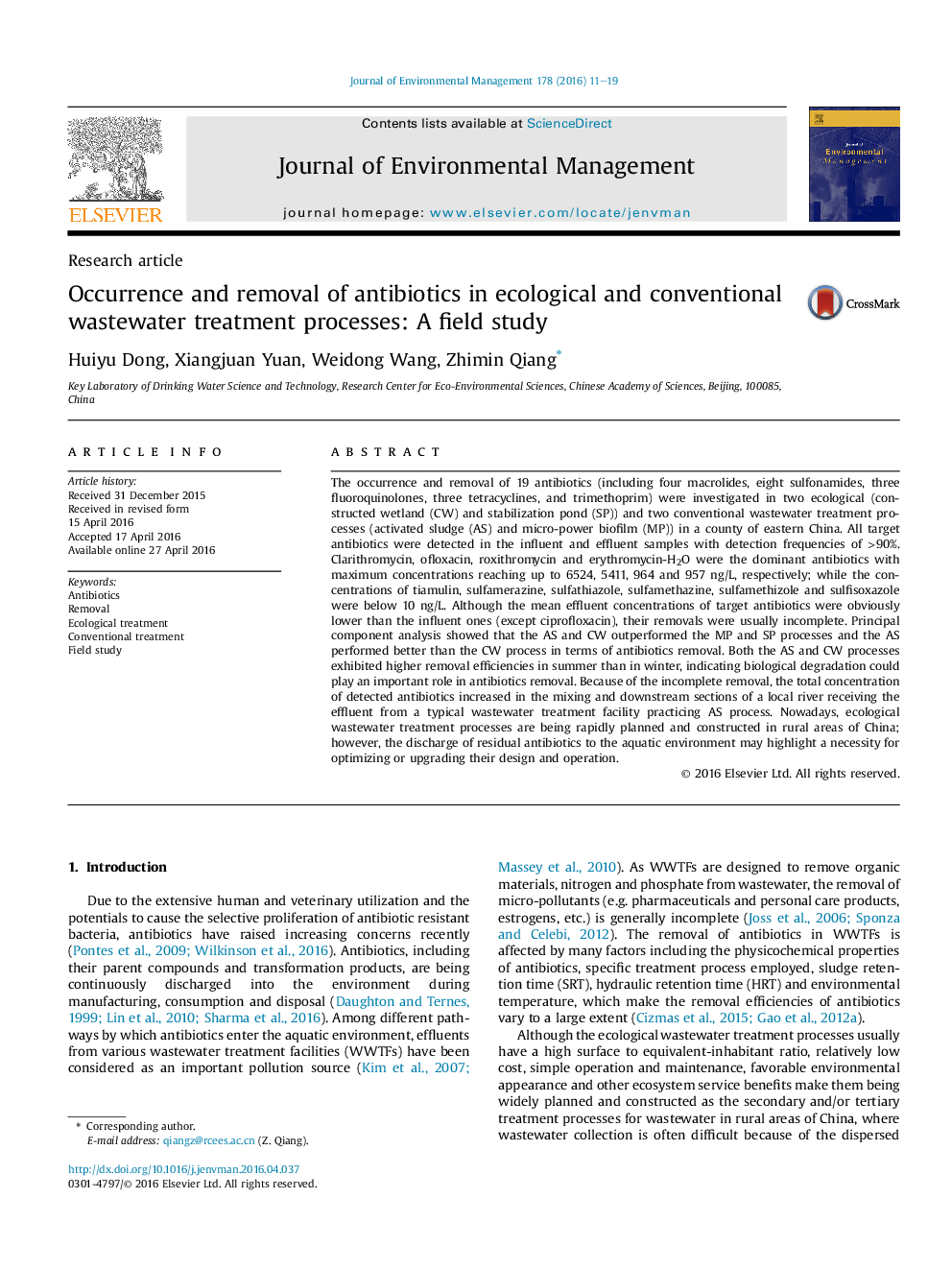| کد مقاله | کد نشریه | سال انتشار | مقاله انگلیسی | نسخه تمام متن |
|---|---|---|---|---|
| 1055356 | 1485234 | 2016 | 9 صفحه PDF | دانلود رایگان |
• The removal of antibiotics was examined in four wastewater treatment processes.
• The AS and CW outperformed the SP and MP for antibiotics removal.
• The ecological processes had notable seasonal variations in removing antibiotics.
• The WWTF effluent impacted obviously the water quality of a receiving river.
The occurrence and removal of 19 antibiotics (including four macrolides, eight sulfonamides, three fluoroquinolones, three tetracyclines, and trimethoprim) were investigated in two ecological (constructed wetland (CW) and stabilization pond (SP)) and two conventional wastewater treatment processes (activated sludge (AS) and micro-power biofilm (MP)) in a county of eastern China. All target antibiotics were detected in the influent and effluent samples with detection frequencies of >90%. Clarithromycin, ofloxacin, roxithromycin and erythromycin-H2O were the dominant antibiotics with maximum concentrations reaching up to 6524, 5411, 964 and 957 ng/L, respectively; while the concentrations of tiamulin, sulfamerazine, sulfathiazole, sulfamethazine, sulfamethizole and sulfisoxazole were below 10 ng/L. Although the mean effluent concentrations of target antibiotics were obviously lower than the influent ones (except ciprofloxacin), their removals were usually incomplete. Principal component analysis showed that the AS and CW outperformed the MP and SP processes and the AS performed better than the CW process in terms of antibiotics removal. Both the AS and CW processes exhibited higher removal efficiencies in summer than in winter, indicating biological degradation could play an important role in antibiotics removal. Because of the incomplete removal, the total concentration of detected antibiotics increased in the mixing and downstream sections of a local river receiving the effluent from a typical wastewater treatment facility practicing AS process. Nowadays, ecological wastewater treatment processes are being rapidly planned and constructed in rural areas of China; however, the discharge of residual antibiotics to the aquatic environment may highlight a necessity for optimizing or upgrading their design and operation.
Figure optionsDownload as PowerPoint slide
Journal: Journal of Environmental Management - Volume 178, 1 August 2016, Pages 11–19
